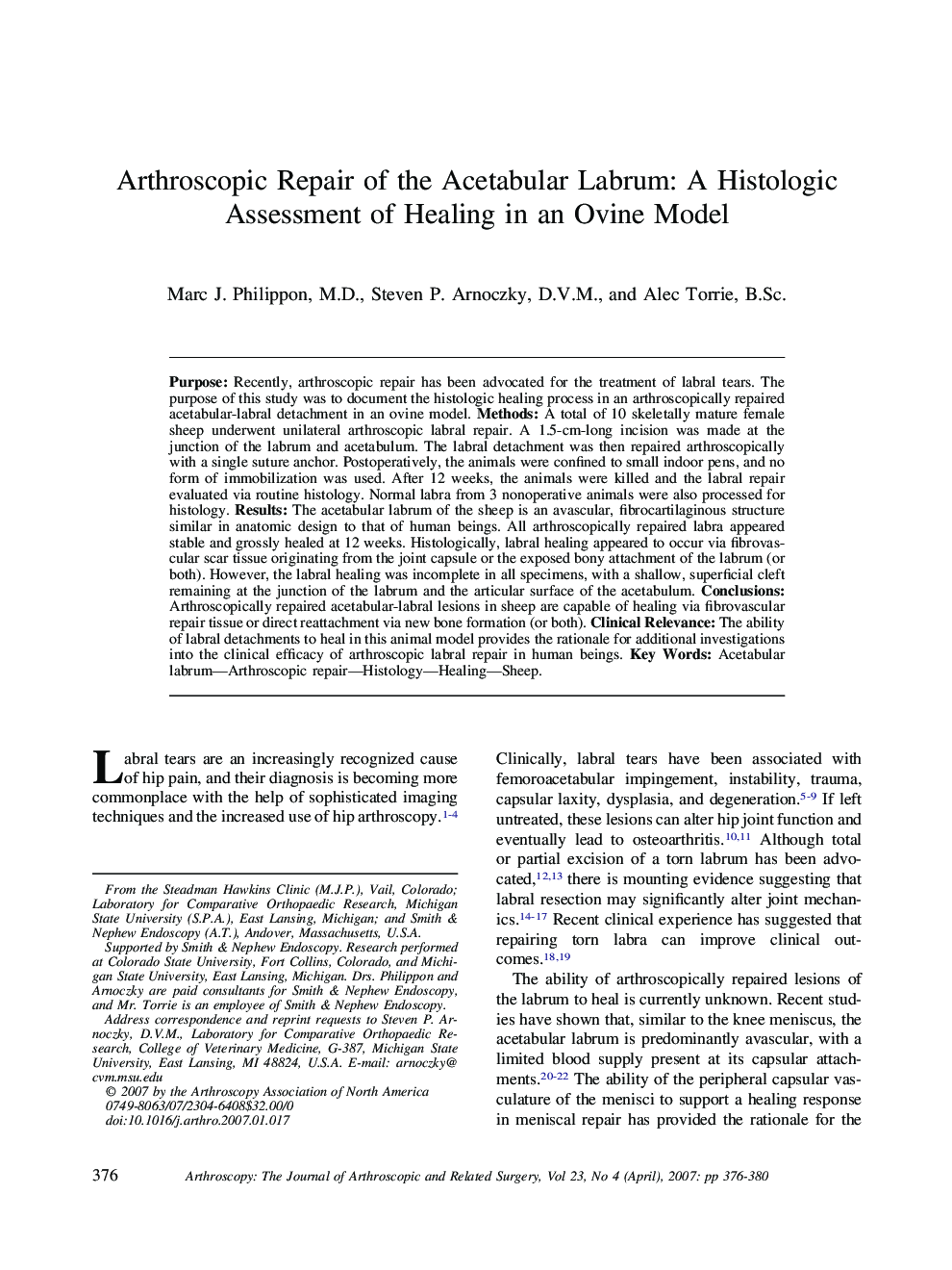| Article ID | Journal | Published Year | Pages | File Type |
|---|---|---|---|---|
| 4047577 | Arthroscopy: The Journal of Arthroscopic & Related Surgery | 2007 | 5 Pages |
Purpose: Recently, arthroscopic repair has been advocated for the treatment of labral tears. The purpose of this study was to document the histologic healing process in an arthroscopically repaired acetabular-labral detachment in an ovine model. Methods: A total of 10 skeletally mature female sheep underwent unilateral arthroscopic labral repair. A 1.5-cm-long incision was made at the junction of the labrum and acetabulum. The labral detachment was then repaired arthroscopically with a single suture anchor. Postoperatively, the animals were confined to small indoor pens, and no form of immobilization was used. After 12 weeks, the animals were killed and the labral repair evaluated via routine histology. Normal labra from 3 nonoperative animals were also processed for histology. Results: The acetabular labrum of the sheep is an avascular, fibrocartilaginous structure similar in anatomic design to that of human beings. All arthroscopically repaired labra appeared stable and grossly healed at 12 weeks. Histologically, labral healing appeared to occur via fibrovascular scar tissue originating from the joint capsule or the exposed bony attachment of the labrum (or both). However, the labral healing was incomplete in all specimens, with a shallow, superficial cleft remaining at the junction of the labrum and the articular surface of the acetabulum. Conclusions: Arthroscopically repaired acetabular-labral lesions in sheep are capable of healing via fibrovascular repair tissue or direct reattachment via new bone formation (or both). Clinical Relevance: The ability of labral detachments to heal in this animal model provides the rationale for additional investigations into the clinical efficacy of arthroscopic labral repair in human beings.
